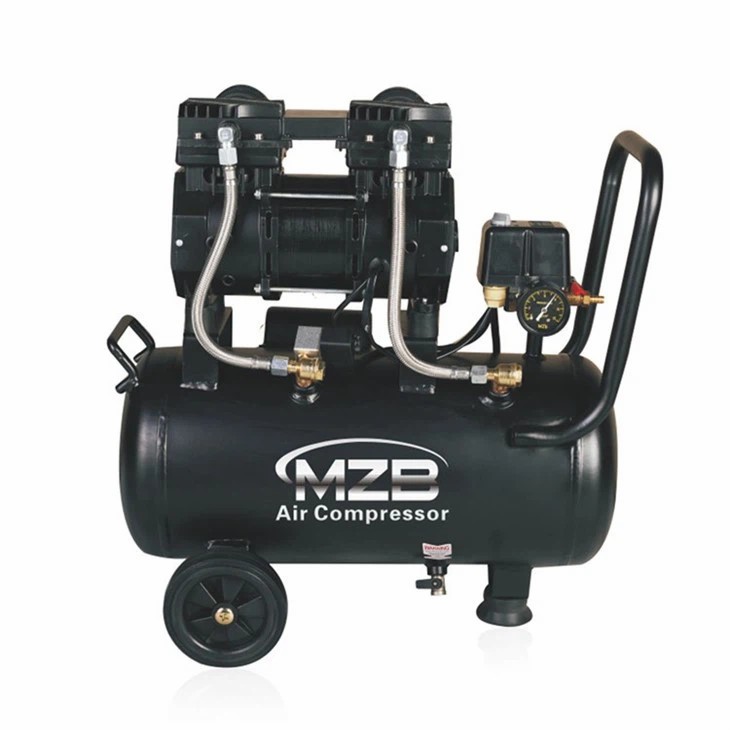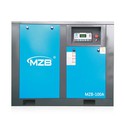When it comes to operating an oilless air compressor efficiently, understanding the duty cycle is crucial. As a leading supplier of Oilless Air Compressor, we often receive inquiries about how to calculate the duty cycle of these compressors. In this blog post, I'll walk you through the process step by step, ensuring you have a clear understanding of this important concept.
What is Duty Cycle?
The duty cycle of an air compressor refers to the amount of time a compressor can run within a given period before it needs to rest to prevent overheating. It is typically expressed as a percentage over a 10 - minute cycle. For example, a compressor with a 50% duty cycle can run for 5 minutes and then must rest for 5 minutes within a 10 - minute period. This is because continuous operation without breaks can cause excessive wear and tear on the compressor's components, leading to reduced lifespan and potential breakdowns.
Factors Affecting the Duty Cycle
Several factors can influence the duty cycle of an oilless air compressor:
1. Compressor Size and Capacity
Larger compressors with higher horsepower and greater air - delivery capacity generally have a higher duty cycle. They are designed to handle more demanding tasks and can run for longer periods without overheating. For instance, our Oil Free Portable Air Compressor is smaller and more suitable for light - duty applications, and thus may have a lower duty cycle compared to our industrial - grade models.
2. Ambient Temperature
The temperature of the environment in which the compressor operates plays a significant role. Higher ambient temperatures make it more difficult for the compressor to dissipate heat. As a result, the duty cycle may need to be reduced to prevent overheating. If you operate our Super Silent Air Compressor in a hot workshop, you may need to give it more rest time between operation cycles.
3. Air Demand
The amount of air required by your tools or equipment affects the duty cycle. If you are using tools that demand a large volume of air continuously, the compressor will have to work harder and may need more rest time. For example, using a high - volume spray gun will put more strain on the compressor than a small pneumatic nailer.
How to Calculate the Duty Cycle
Calculating the duty cycle of an oilless air compressor involves a simple formula. First, you need to measure the time the compressor runs and the total time of the cycle.
The formula for calculating the duty cycle is:
[ Duty\ Cycle(%)=\frac{Running\ Time}{Total\ Cycle\ Time}\times100 ]
Let's say you observe your compressor running for 3 minutes and then it stops for 7 minutes within a 10 - minute period. Using the formula:
[ Duty\ Cycle(%)=\frac{3}{10}\times100 = 30% ]
This means your compressor has a 30% duty cycle.
Practical Steps to Measure the Duty Cycle
Here are the steps you can follow to measure the duty cycle of your oilless air compressor accurately:
Step 1: Select a Representative Cycle
Choose a period of time that represents the normal operation of your compressor. This could be a 10 - minute, 15 - minute, or 20 - minute cycle, depending on your usage pattern.
Step 2: Start the Timer
When the compressor starts running, start your timer. Keep track of the time the compressor is in operation.
Step 3: Record the Running Time
When the compressor stops running, stop the timer and record the running time.
Step 4: Measure the Total Cycle Time
Continue to measure the total time until the compressor starts running again. This is the total cycle time.
Step 5: Calculate the Duty Cycle
Use the formula mentioned above to calculate the duty cycle.
Importance of Knowing the Duty Cycle
Understanding the duty cycle of your oilless air compressor is essential for several reasons:
1. Equipment Longevity
By operating the compressor within its recommended duty cycle, you can extend its lifespan. Overworking the compressor can lead to premature wear of components such as pistons, valves, and motors.
2. Energy Efficiency
Running the compressor at an appropriate duty cycle helps save energy. If you run the compressor continuously when it doesn't need to be, you are wasting electricity or fuel.
3. Consistent Performance
Maintaining the correct duty cycle ensures that your compressor can provide a consistent supply of air to your tools and equipment, resulting in better performance.
Tips for Optimizing the Duty Cycle
Here are some tips to help you optimize the duty cycle of your oilless air compressor:


1. Choose the Right Compressor
Select a compressor that matches your air demand. If you have high - volume air requirements, choose a larger compressor with a higher duty cycle.
2. Improve Ventilation
Ensure that the compressor is located in a well - ventilated area. Good ventilation helps the compressor dissipate heat more effectively, allowing it to run for longer periods.
3. Maintain Your Compressor
Regular maintenance, such as cleaning the air filter, checking the oil level (if applicable), and tightening loose connections, can improve the efficiency of the compressor and its duty cycle.
Conclusion
Calculating the duty cycle of an oilless air compressor is a straightforward process that can have a significant impact on the performance and longevity of your equipment. As a supplier of high - quality Oilless Air Compressor, we are committed to providing you with the knowledge and products to ensure efficient operation.
If you have any further questions about duty cycles, compressor selection, or maintenance, please don't hesitate to contact us. We are here to assist you in finding the best solutions for your air - compression needs. Whether you are a small - scale workshop or a large industrial facility, we can help you make the most of your oilless air compressor.
References
- Compressed Air and Gas Institute (CAGI) standards on air compressor performance.
- Manufacturer's manuals for oilless air compressors.






